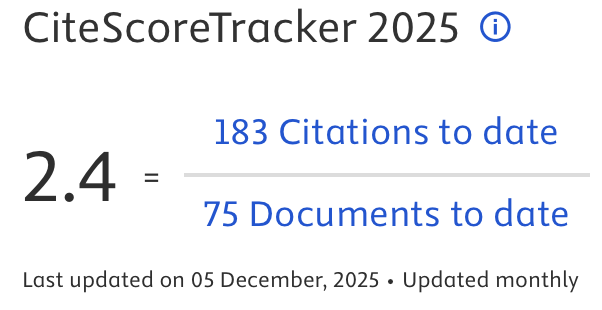TAFWÎD METHOD IN UNDERSTANDING MUTASHÂBIHÂT VERSES
DOI:
https://doi.org/10.14421/qh.2020.2102-03Keywords:
al-mufawwidah, al-mu’awwilah, huruf al-muqaṭṭa’ah, InterpretationAbstract
Mutashâbihât verse is a verse that has a vague meaning. This vagueness can occur in terms of lafaz, or in terms of meaning, or in terms of lafaz and their meaning. In the existing debate, this paper aims to examine the methods used by scholars in understanding the mutashabihat verses. (a) How is the analysis of the interpretation of scholars in understanding the mutashâbihât verses? (b) What factors cause them to disagree? This paper is built from data collected through library research by tracing sources that relate directly to the theme. This paper uses the approach of interpretation and science. This paper shows that scholars use two methods in understanding mutashabihat verses. First; ta’wil method, they tend to understand the letter waw as waw ‘ataf in the fragment of verse wa al-rasikhuna fi al-’ilm (Q.S.Ali Imran (3): 7), which connects the previous sentence, the connotation is that Allah and the people are firmly grounded in knowledge know the definite meaning. Second; tafwid method, they tend to understand the letter waw as waw al-isti’naf functions as mubtada’ which is a new sentence. The connotation is to give its definite meaning to Allah alone and to those whose knowledge is profound in their faith. Some mutashabihat verses can be identified through scientific theory.
 Abstract viewed: 843 times
|
Abstract viewed: 843 times
|
 PDF downloaded = 717 times
PDF downloaded = 717 times
References
’Atar, Nur al-Din. Ulum Al-Qur’an Al-Karim. Damaskus: al-Sibl, 1996.
Ahmad Musthafa al-Maraghi. Tafsir Al-Maraghi. 24th ed. Beyrut: Dar Ihya’ al-Turath al-’Arabi, 1985.
Al-, Abi al-Husein Muslim bin Hajjaj, and Qusyairi Al-Naisaburi. Shahih Muslim. II. Beyrut: Dar al-Fikr, 1988.
Al-Asfahani, Al-Raghib. Mu’jam Mufradat Alfaz Al-Qur’an. Beyrut: Dar al-Fikr, 2010.
Al-Suyuti, Jalal al-Din. Al-Itqan Fi Ulum Al-Qur’an. III. Cairo: Dar al-Hadis, 2006.
Amir, Al-Tahir. Al-Ta’wil Inda Al-Mufassirin Min Al-Salafi. Beyrut: Dar Ibnu Hazm, 2011.
Badar al-Din al-Zarkashi. Al-Burhan Fi Ulum Al-Qur’an. II. Kairo: Dar al-Turath, 1984.
Harun, Salman. Mutiara Al-Qur’an Menerapkan Nilai-Nilai Kitab Suci Dalam Kehidupan Sehari-Hari. Jakarta: Qaf, 2018.
Hikamatir Pasya, Muhammad Iqbal Rivai. “Al-Ayah Al-Mutasyabihat Al-Lafzhiyyah Fi Surah Al-An’am ’Inda Al-Kirmani.” Studia Quranika Volume 2, no. No. 1 (2017): 97–134.
Ibrahim ’Awd. Masir Al-Tafsir Wa Al-Manhaj Wa Al-Ittijahat. Kairo: Jazirah al-Warad, 2010.
Jajan Burhanuddin and Kees Van Dijk. Islam in Indonesia: Constasting Images and Interpretations. Amsterdam: Amsterdam University Press, 2013.
Ling Misbahuddin. “Epistmologi Al-Qur’an Dalam Membangun Sains Islam.” Theologia Volume 26, no. No. 1 (2015): 3–15.
Manna’ Qattan. Mabahith Fi Ulum Al-Qur’an. Kairo: Maktabah Wahbah, 2000.
Muhammad ’Ali al-Sabuni. Safwah Al-Tafasir, Juz 3. III. Beyrut: Dar al-Fikr, 2001.
Muhammad “Abd” al-Azim al-Zarqani. Manahil Al-’Irfan Fi ’Ulum Al-Qur’an. II. Beyrut: Dar al-Fikr, 1988.
Muhammad Anwar Firdausi. “Membincang Ayat-Ayat Muhkam Dan Mutasyabih.” Jurnal Ulul Albab 16, no. No.1 (2015): 80–88.
Muhammad Husein al-Taba’taba’i. Tafsir Al-Mizan. XVIII. Teheran: Dar al-Kutub al-’Ilmiyah, n.d.
Nahar, Syamsu. “Keberadaan Ayat Muhkam Dan Mutasyabih Dalam Al-Qur’an.” Jurnal Nizhamiyah VI, no. No.2 (2016): 1–18.
Norsyafiaah Thoifun, Mohd Faizulamri Mohd Saad & Wan Nasyrudin Wan Abdullah. “Aplikasi Kaedah Penafsiran Ayat Mutasyabihat Dalam Tafsir Melayu.” Jurnal Al-Turath Vol.4, no. No.1 (2019): 32–39.
Nur al-Din’Itr. Ulum Al-Qur’an Al-Karim, 1996.
Salih, Abd Qadir Muhammad. Al-Tafsir Wa Al-Mufassirun. Beyrut: Dar al-Ma’arif, 2003.
Sayyid Qutb. Fi Zilal Al-Qur’an. V. Mesir: Dar al-Shurûq, 2011.
Shihab, M.Quraish. Kaidah Tafsir Syarat, Ketentuan, Dan Aturan Yang Patut Anda Ketahui Dalam Memahami Ayat-Ayat Al-Qur’an. I. Tangerang: Lentera Hati, 2013.
———. Tafsir Al-Mishbah Pesan Kesan Dan Keserasan Al-Qur’an. Volume 2. Jakarta: Lentera Hati, 2009.
Siti Badiah. “Hikmah Dan Nilai-Nilai Pendidikan Adanya Ayat-Ayat Muhkamat Dan Mutasyabihat Dalam Al-Qur’an.” Jurnal All-Dzikra XI, no. No.1 (2017): 107–23.
Sulayman, Ismail Ali. Safwah Al-Bayan Fi Mutasyabihat Al-Nazimfi Al-Qur’an. Kairo: Ibad al-Rahman, 2015.
Yanti, Nova. “Memahami Makna Muhkamat Dan Mutasyabihat Dalam Al-Qur’an.” Jurnal Pendidikan Islhlah 8, no. 2 (2016): 246–56.
Downloads
Published
How to Cite
Issue
Section
License
Publishing your paper with Jurnal Studi Ilmu-ilmu al-Qur'an dan Hadis means that the author or authors retain the copyright in the paper. Jurnal Studi Ilmu-ilmu al-Qur'an dan Hadis uses license CC-BY-NC-ND or an equivalent license as the optimal license for the publication, distribution, use, and reuse of scholarly works. This license permits anyone to copy and redistribute the material in any medium or format and must give appropriate credit, provide a link to the license, and indicate if changes were made. If you remix, translate, transform or build upon the material you may use it for private use only and not for distribution. Jurnal Studi Ilmu-ilmu al-Qur'an dan Hadis granted an exclusive non-commercial reuse license by the author(s), but the author(s) are able to put the paper onto a website, distribute it to colleagues, give it to students, use it in your thesis, etc, so long as the use is not directed at a commercial advantage or toward private monetary gain. The author(s) can reuse the figures and tables and other information contained in their paper published by Jurnal Studi Ilmu-ilmu al-Qur'an dan Hadis in future papers or work without having to ask anyone for permission, provided that the figures, tables, or other information that is included in the new paper or work properly references the published paper as the source of the figures, tables or other information, and the new paper or work is not direct at a private monetary gain or commercial advantage.
Jurnal Studi Ilmu-ilmu al-Qur'an dan Hadis journal Open Acces articles are distrubuted under the Creative Commons Attribution-NonCommercial-NoDerivatives 4.0 International (CC BY-NC-ND 4.0). Article can be read, copy and redistribute the material ini any medium or format under the following conditions:
Attribution — You must give appropriate credit, provide a link to the license, and indicate if changes were made. You may do so in any reasonable manner, but not in any way that suggests the licensor endorses you or your use.
NonCommercial — You may not use the material for commercial purposes.
NoDerivatives — If you remix, transform, or build upon the material, you may not distribute the modified material.










